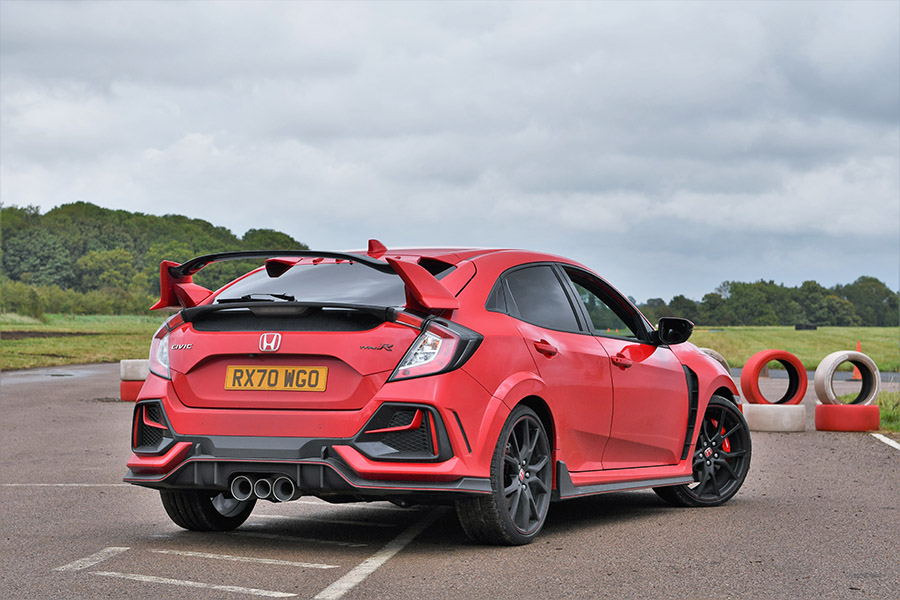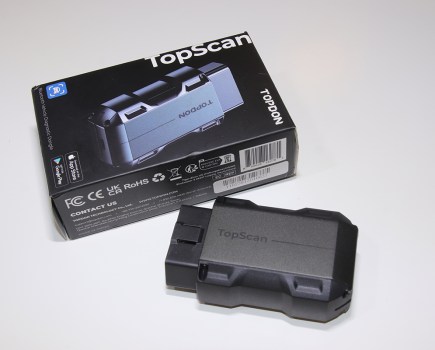Beauty is in the eye of the beholder. We’ve noticed that, more often than not, people’s first review of the Honda Civic Type R FK8 is ‘Hmm… it’s not a pretty car, is it?’ But that, of course, is its hook. This car isn’t out to win beauty pageants. Its existence is down to focus, function and belligerence, making the performance the absolute best that it can possibly be. The uncompromising looks are almost a direct reaction to the seriousness of what’s going on beneath the skin. It walks the walk because it doesn’t have to talk the talk. Don’t like the looks? Sure, whatever, it will have disappeared over the horizon before you know it.
Let’s not forget, of course, that the old FK2 was a pretty challenging-looking thing when that was launched. It’d never be as subtle as, say, a Golf R, but that was the point. When you buy a Type R, you’re not just buying a pocket rocket. You’re buying into a generations of red-blooded petrolhead culture. That hasn’t halted with the introduction of the latest FL5 Civic Type R. Read on for our Honda Civic Type R FK8 review.
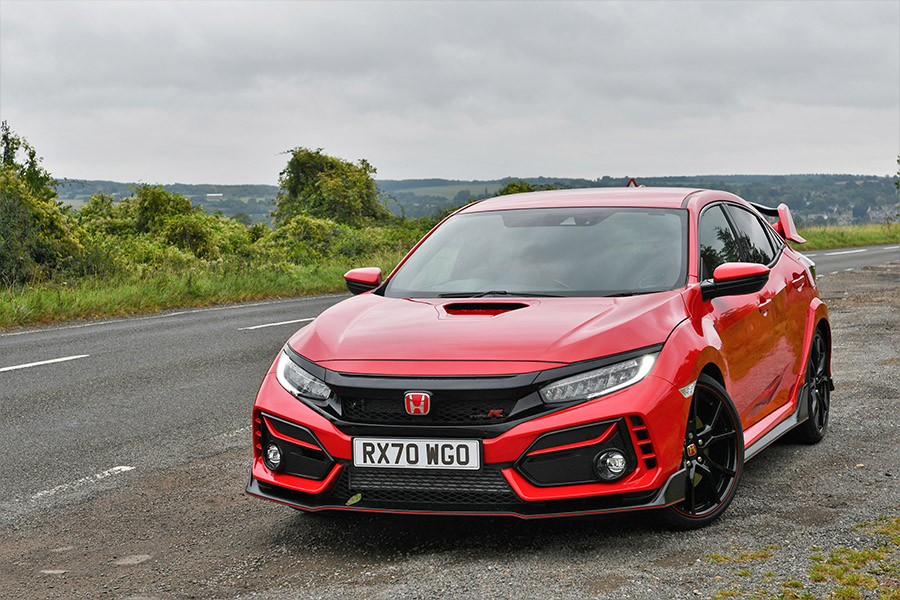
FK8 Type R Lap Times and Specification
As you might hope, the FK8 is all about the numbers. Its Nürburgring Nordschleife lap time proved typically contentious, just as it did with its predecessor, as Honda insisted on running their laps with a roll-cage installed. Naturally, this led naysayers to suggest that it’s not exactly production spec. Honda’s riposte is that the ’cage was mounted on rubber bushes and thus not adding any aftermarket-style rigidity to the shell. While the deleted interior accoutrements merely counterbalanced the weight added by the monkey bars.
Sounds fair enough to us. Whichever way you look at it, it’s a hell of a lap. Seven minutes and 43.8 seconds, a proper FWD benchmark, in an unmodified car that you could pick up at the time for £32,000 (or $34,000 in the USA).
The performance creds back it all up in spades, with a 0-62mph time of 5.7 seconds and a frankly ludicrous top speed of 169mph. This last figure is particularly astounding. We’ve become blasé about performance figures in recent times. Anything above 300hp is viewed as accepted normality for hot hatches rather than eye-widening.169mph? It wasn’t all that long ago that this was supercar stuff. Now it’s in a sensible shopping hatchback that you could bumble to the Lyons Corner House in with your gran in the passenger seat.
Lightweight
The whole thing only weighs 1380kg too. Consider, for instance, that the Focus RS tips the scales at 1542kg. Alright, the Ford may have 4WD and gimmicky ‘drift mode’, but Honda feels very strongly that front-wheel-drive is as integral to the hot hatch experience as a proper manual gearbox. The tweaks to the FK2’s powertrain free up a few extra horses. It’s worth keeping in mind that the aftermarket is now well-versed in the art of making these K20C1 VTEC motors into absolute animals. Check out our FK8 Civic Type R tuning guide for more advice on that.
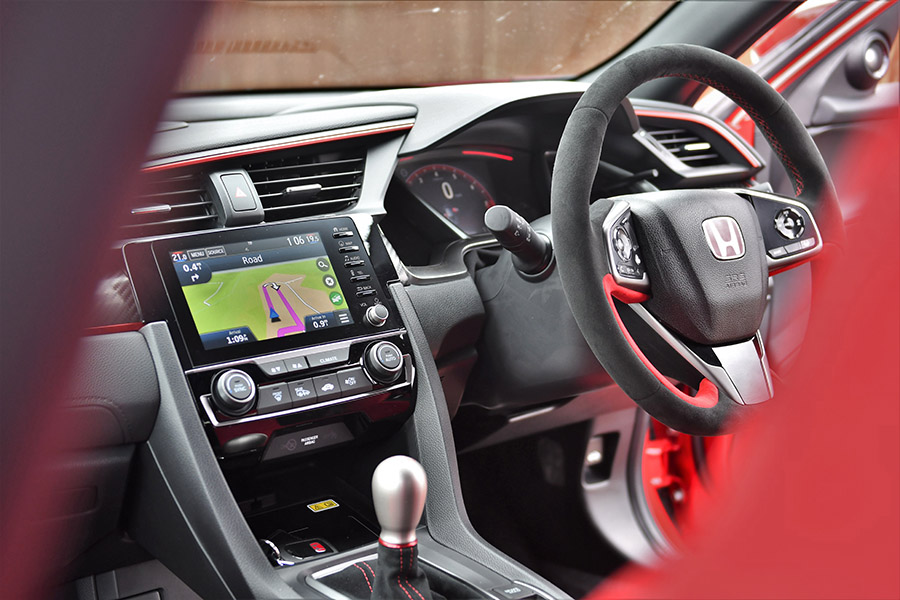
FK8 Civic Type R Driving Impressions
So… lets get down to this Honda Civic Type R FK8 review. Well, as you might imagine, it’s astonishing. At first, we weren’t expecting to find a massive change over the FK2. On paper, the FK8 seemed to offer little different beyond a smidge more power and a suspension redesign to replace the old torsion beam rear with a multi-link setup. But we’re very happy to eat our hats and say that the FK8 Type R genuinely does transcend the sub-brand to a whole other level.
The poise and delicacy are still there. However, everything feels more scalpel-sharp. Your steering inputs rewarded with an immediacy way beyond that of the older car (despite being a new electric system, surprisingly). While the revised suspension allows you to place the nose of the Civic directly into the apex of seemingly any corner regardless of speed, camber, surface or entry angle. As you follow through the corner, you sense that the agile chassis is holding the car near-enough completely flat. It’s genuinely surreal.
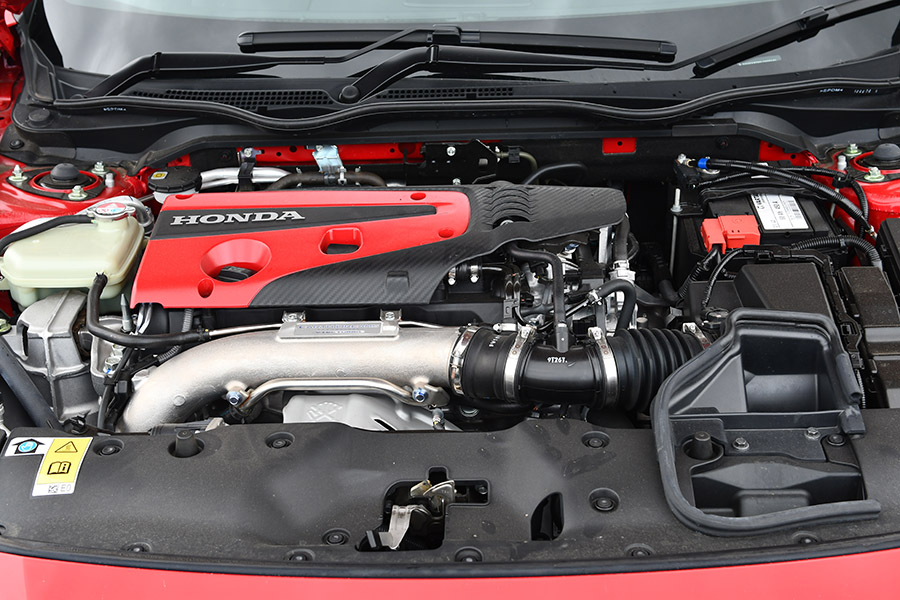
V-Max Test: Honda Civic Type R FK8 Review
Before we were granted the opportunity to stretch the FK8’s legs on track, we pinched the keys for a couple of hours to try out some top-speed runs on the unrestricted sections of autobahn between Dresden and Berlin. This, as any seasoned bahnstormers among you will know, is an intricate ballet of high-octane mischief and extremely tactical driving. These are two-lane sections with plenty of unsighted curves.
There’s always the possibility of some old fella in a VW camper pulling out in front of you as you’re closing in at well above 100mph. But despite moderate traffic, we managed to see 153mph without drama. As a passenger, we observed our colleague achieving an indicated 168mph. So close to that published top end and genuinely seeming as if it had more to give. We reckon the standard car would easily top 170mph. This is a whole new realm of hot hatch silliness.
The two key takeouts from trying to v-max it on the road are the aero and the brakes. With the former, it’s amusing to note that you can actually hear the rear spoiler working at speed. As your velocity increases, those vortex generators and that high-level blade work together to create genuine negative lift (or, if you will, downforce). You’re aware of this angry sucking noise from behind as the air rushes past in exactly the way Honda want it to.
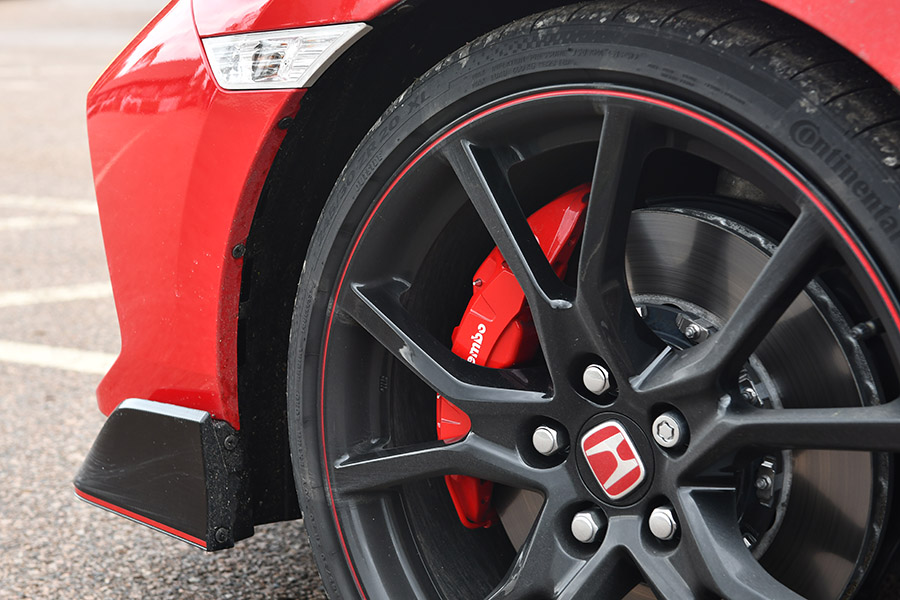
Braking test
And the brakes? Those Brembos are astonishing. Just as you find yourself pondering how improbably stable and secure the Civic feels at 150mph+, as well as being impressively quiet, you spy a van pulling out ahead and jump on the middle pedal. It’s as if you’ve reached the elastic limit of a stretchy rope tied to the back of the car. It just hauls up with surety, in a dead-straight line, with no panic or histrionics. And it’ll do it over and over again too. There’s no worry about the brakes wilting or fading.
Oh yes, and one word about the quietness: you see those triple exhausts? The last time the automotive world saw that kind of thing, it was hanging out the back of an F40. Whereas in that case, the central outlet was a wastegate screamer pipe, in this instance, the Civic’s smaller central exhaust is there to suck in air at high speed (improbable, but apparently true) to quieten down the outer pipes and stop them booming, without any negative effect on flow or power. How clever is that?

Honda Civic Type R FK8 On Track Review
And so to the track. We had unfettered access to the Lausitzring to really get to grips with the perky whimsicality of this fresh new chassis, and it was the perfect venue for it. Although it’s primarily an oval speedway, it’s got a technical infield section with tight corners, unexpected undulations and slightly frightening chicanes – think of it like Daytona transplanted into the German countryside.
We’d already noted how the car’s on-road behavior’s was far improved over the FK2, which could be a bit bangy and crashy over bumps, and the revelation on track was that the +R button actually yields impressive tactility now.
With the older car, it could be argued that the manic +R mode rather spoiled the experience, and we’d still like to see a more BMW-like interface whereby the parameters can be tailored (so that, for example, you could choose to keep the suspension in Sport while the throttle response switched to +R or what-have-you), but nevertheless, the FK8’s +R is far more logical. Loopy yet civilized, it allows you to wring the best from the car without shaking your spine out of the top of your head.
So, you can use track mode on the road, and on the track, the FK8’s just magical – those seats are typically superb, the gearbox has the perfect weight to its shift action, the brakes inspire so much confidence, and the way you’re able to thread the car between hot left-right interchanges without confusing the chassis is sublime. The swap from a dual- to a single-mass flywheel works beautifully in conjunction with the manner in which Honda has minimized turbo lag, meaning that the revs rise sharply, and the car pulls hard from 2500rpm right through to 7000.
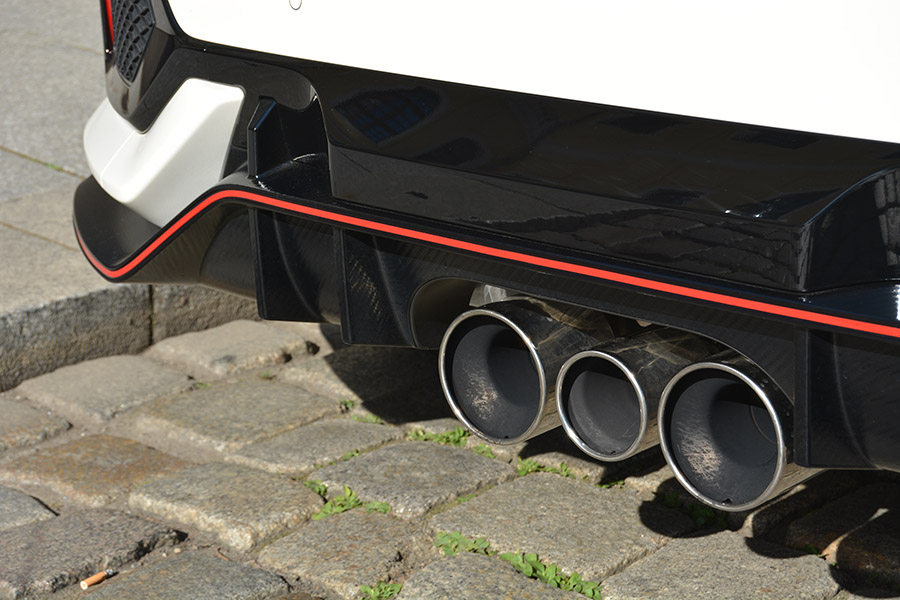
Verdict
In stock factory form, it’s both a fabulous road car and a tremendously capable track car. You can encourage it into oversteer if you taunt it with the brakes, but fundamentally this chassis is all about grip; about deploying those vast swells of horsepower in the most efficient manner possible. We weren’t expecting the FK8 to be all that different to the older FK2, but as it turns out, it was a genre-redefining game-changer. Not pretty, but it didn’t need to be.
Looking to buy one? Check out our FK8 buying guide.

